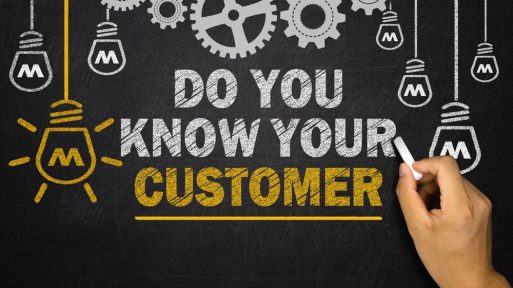FINDING NEW CUSTOMERS… IS NOT ENOUGH
Acquiring new customers (direct clients, distributors, or agents) is a very important activity in a market context like the current one. One that’s dominated by hyper-competition – increased competition – and constantly evolving markets. With regards to this I invite you to read How to Find New Customers.
However, this research phase must be managed well and without rush. In fact, it is an opportunity to find out not just names and surnames, but also that information which later becomes useful in the first contact phase with the aim of being able to immediately arouse interest. Here are some tips.

CREATE A CUSTOMER DATABASE
The first step is to work on a simple Excel spreadsheet that must contain all the basic information: company name, activity (distributor, agent, etc.), name and surname of the person you’ve found, their role in the company (for example, purchasing manager), country, website, email address (preferably personal) and telephone number.
In addition to this, I recommend that you also note:
1. If this person is present on a social network – like Linkedin or Xing – because then we can initiate our first contact through this channel (if we do not have direct email)
2. An area for your notes where you can write down important information that you can then use in the contact phase: if they are a distributor it is useful to know which other companies they have in their portfolio; if they’re a customer, what details do they focus on when presenting their products?
3. Company dimensions (on Sales Navigator there are, for example, size indications stated in terms of number of employees or turnover)
4. The source from which I got the contact and the keywords used.
THE ADVANTAGES OF A CUSTOMER RELATIONSHIP MANAGEMENT (CRM)
If the first step is the classic Excel spreadsheet, then it will be useful to seriously consider a CRM; in other words, a customer business management program.
If the spreadsheet is done as recommended, this file can be imported into the CRM and therefore all the previous work done is not wasted.
Let’s see the advantages of a CRM:
1. Saves all the information from a multitude of channels in one place
2. Leads to a better organization of activities with customers
3. Saves time
4. Rationalizes teamwork.
There are many CRMs and at different prices. I use Teamleader which is designed for small businesses: it’s immediate and at an affordable cost. At this link you can try it free for 2 weeks Teamleader: free trial
One last tip is to not be in a hurry and avoid sending standard emails. But this is possible if you begin your work with in-depth research to get to know potential customers. Activity facilitated precisely by the use of a CRM.
If you want to know more about these topics, read my book Exporting in 7 Steps.
